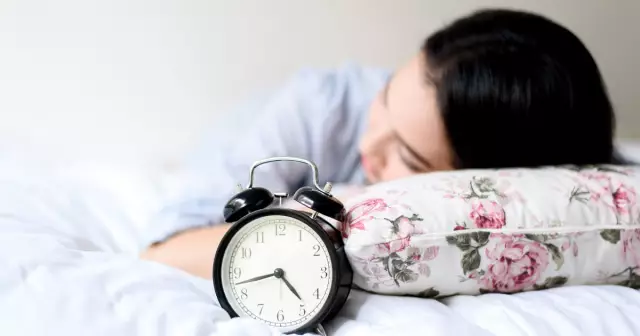- Author Curtis Blomfield [email protected].
- Public 2023-12-16 20:44.
- Last modified 2025-01-23 17:01.
Laying patients require special care due to lack of mobility. The correct position of the patient in bed plays an important role in the treatment of difficult cases, when the number of movements is minimized. Permissible physical activity is determined by the doctor who is directly involved in the care of the patient; a nurse also takes care of the patient. In the case of bedridden care at home, the steps to change position in bed are performed by family members who have been instructed and attended practical exercises.
Characteristic of the position of the lying patient
In the treatment of patients with fractures, intoxication of the body, after blood loss and surgery, the doctor prescribes bed rest. There are three types of mobility restriction due to illness and injury:
- active, in which the patient is able to independently serve himself, turn around, sit down and get up, but at the same time, excessive physical activity is contraindicated for him;
- forced, which is taken by the patient to relieve pain on their own or with the help of a nurse;
- passive, when the patient cannot independentlymove, turn, change body position.
There is a certain concept of the position of patients in bed: this is a position in which the patient feels comfortable with any form of physical activity prescribed by the doctor. The motor regimen depends on the disease and is strict in bed, with limited activity and general. There are several types of positions in bed designed for certain manipulations: Fowler, Sims, on the back, on the right side and on the stomach.

Special bed assignment
To place the patient in a physiologically favorable position, a medical bed is used, which facilitates care in a hospital and at home. The special design of the bed allows you to serve postoperative, seriously ill patients and the disabled. The multi-section device allows you to change the angle of inclination of individual parts of the body, equipped with a mechanical or electric drive, folding side rails, wheels for movement and a pull-up device. The functionality of the bed is designed in such a way as to give the optimal position to the body in case of cardiovascular diseases, damage to the neuromuscular system.

The consequences of strict bed rest
Since strict bed rest implies immobility of the patient, pollution and bedsores appear on his body. Prevention of bedsores includes measures to control the condition of the bed, the elimination of rough seams andmattress irregularities, shaking off crumbs and changing underwear. Pollution is constantly removed, for which the patient's position in bed changes and a set of procedures is carried out to clean the skin.

Fowler's position
The Fowlerian position of the patient in bed allows the recumbent to take a reclining position, in which it is easier to breathe and communicate more freely. Laying is carried out after explaining all future actions to the patient. Manipulations are made in the following way:
- the bed is brought to a horizontal position, rises to a sufficient height, convenient for manipulating the patient;
- headboard section rises 45-60 degrees depending on the position to be given - half-sitting or reclining;
- the patient's head is placed on a low pillow or on a mattress, pillows are placed under the immobilized arms and lower back;
- a roller is placed under the hips and a pillow under the lower third of the lower leg;
-
an emphasis is placed under the feet at an angle of 90 degrees.
Before all the manipulations, everything superfluous is removed from the bed - pillows, blankets, rollers, the fence leans back.

Sims Position
In contrast to the semi-sitting position of the patient according to the Fowler method, Sims proposed an intermediate position - between the position on the stomach and on the right side. Manipulations are performed by two or one person:
- the bed rails go down, everyonesections are brought to a horizontal position, cushions are removed, mattress and sheet are aligned;
- the patient is rolled over on his back and moved to the edge of the bed, and then placed in a side lying position;
- given partial prone position;
-
a pillow is placed under the bent arm located above at shoulder level, and the other is pulled down and placed on the bed, sometimes a lining in the form of half a rubber ball is used;
- a pillow is placed under the bent leg so that the knee is at the level of the thigh.

General recommendations
The position of the patient in bed with various diseases should always be comfortable, not interfere with breathing and not contribute to squeezing the arteries with excessive eversion of the knee and elbow joints. Before starting a change of position, it is necessary to make sure that the patient understands the purpose and actions of the person caring for him. The physical and mental state of the patient is also assessed. The bed should be flat, without folds.
If manipulations to change the position of the patient in bed are carried out at home, it is sometimes more profitable to hire a nurse who has professional skills in dealing with bedridden patients with strict bed rest. Functional position changes every two hours.
In the event of muscle hypotrophy associated with a long stay of the patient in an immobile state, actions are performed carefully, gently,to prevent damage to muscle fibers. The joints should be extended slowly, as persistent contracture (limitation of movement) develops over time.






